A specific type of UV radiation is helpful in sterilization applications. But, many people cannot tell whether this is UV light or black light. Again, there’s confusion as to which of the two carries the risk of skin cancer. This article will distinguish between the two ultraviolet radiations and specify their critical applications. Hence, join us as we give our insightful take on the black light vs. UV light debate.
What are UV Lights?
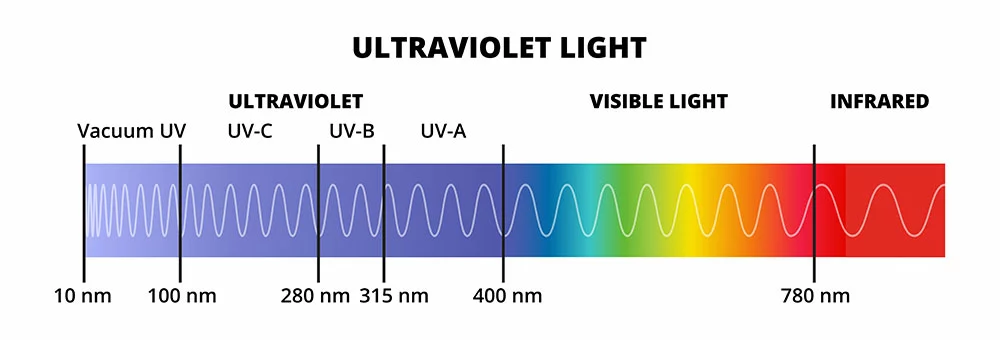
The Electromagnetic Spectrum
Ultraviolet light is electromagnetic radiation that occupies the zone between visible light and x-rays. Its wavelength is between 10 nm to 400 nm, and it has an energy range of between 3eV to 124 eV.
Notably, UV light derives its name from its proximity to the violet band of the visible light zone. Additionally, UV light reaches the earth; its wavelength is shorter than visible light. Hence, it’s invisible to the human eye.
Below is a range of wavelengths for the ultraviolet spectrum:
- Short Wave, Germicidal: 100-280 nm
- UVB, Medium Wave: 280-320 nm
- UVA, Long Wave/ black light: 320-400 nm
- Violet/ Visible Light: 400-450 nm
From this breakdown, the short wave UV is the shortest wavelength in the band and is helpful in germicidal applications.
Types of UV Bands
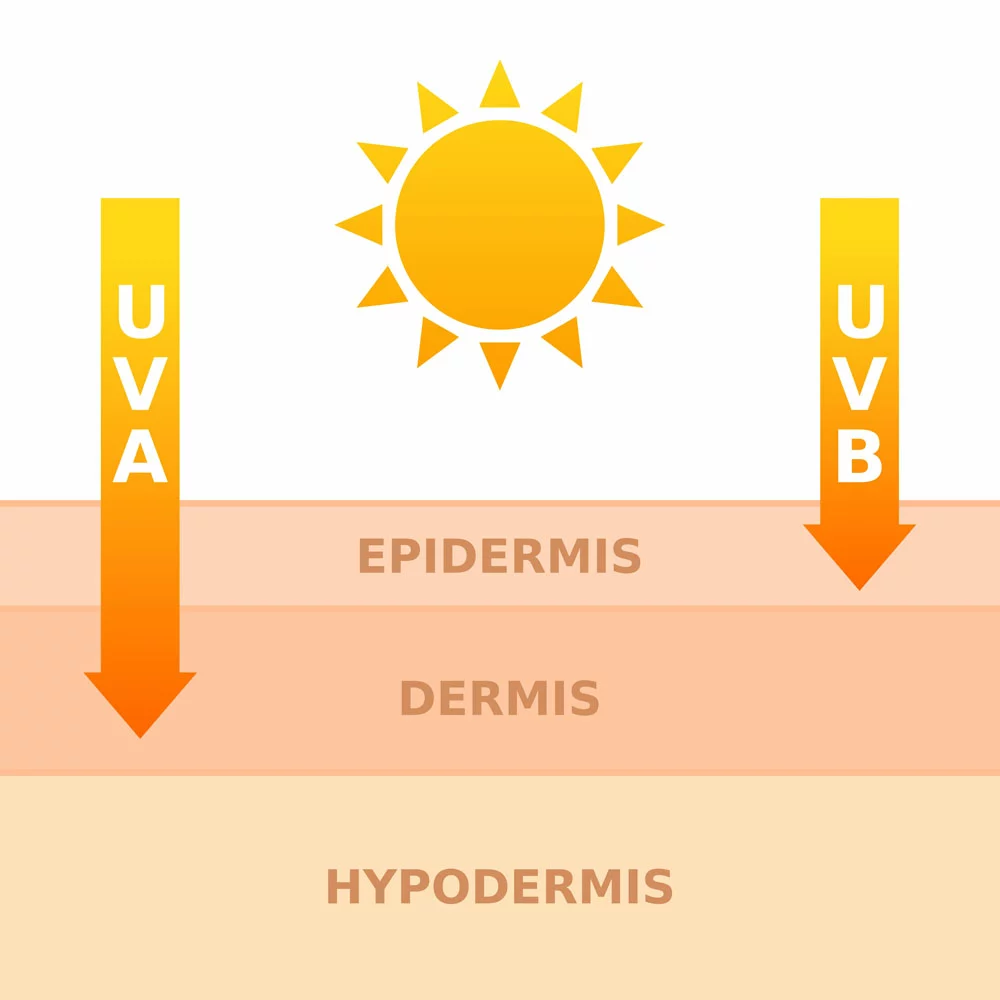
How UV light penetrates the skin.
Ultraviolet radiation features three leading bands that include:
a.) UVA
They have the longest wavelength, measuring between 320–400 nm. Also, UVA accounts for 95% of the UV that reaches the earth from the sun. Notably, UVA light is the tanning beam as it penetrates the skin resulting in alteration of its DNA. Also, they can cause a fatal type of skin cancer in cases of extensive exposure.
b.) UVB
They have a shorter wavelength than UVA at 290 to 320 nm. Exposure to UV radiation of this kind is also more toxic than UVA. Thankfully, there are less prevalent and are often seasonal. Also, while extensive exposure to UVA type of UV light will cause tumors, UVB is primarily responsible.
c.) UVC
Of all the types of UV light, this has the shortest wavelength at 200 to 290 nm. It translates to higher frequency and energy, which potentially can cause malignant growth. Luckily, the ozone layer absorbs UVC preventing it from reaching the earth.
What are Black Lights?

Ultraviolet CCFL
Blacklight belongs to one of the types of UV light bands; hence it’s primarily under UV radiation. However, blacklight specifically comprises UVA rays. As mentioned earlier, UVA is characterized by the longest wavelength, thus the least energy of all the types of UV light.
Therefore, unlike UVB and UVC, black light doesn’t cause skin cancer and sunburn. Also, black light is the standard type of UV energy that reaches earth.
Lastly, the name ‘black’ light stems from the inability of humans to decipher UV rays as they’re invisible. However, the eye will often visualize black light as blue, primarily because UVA light also comprises visible radiation.
Types of Black Lights
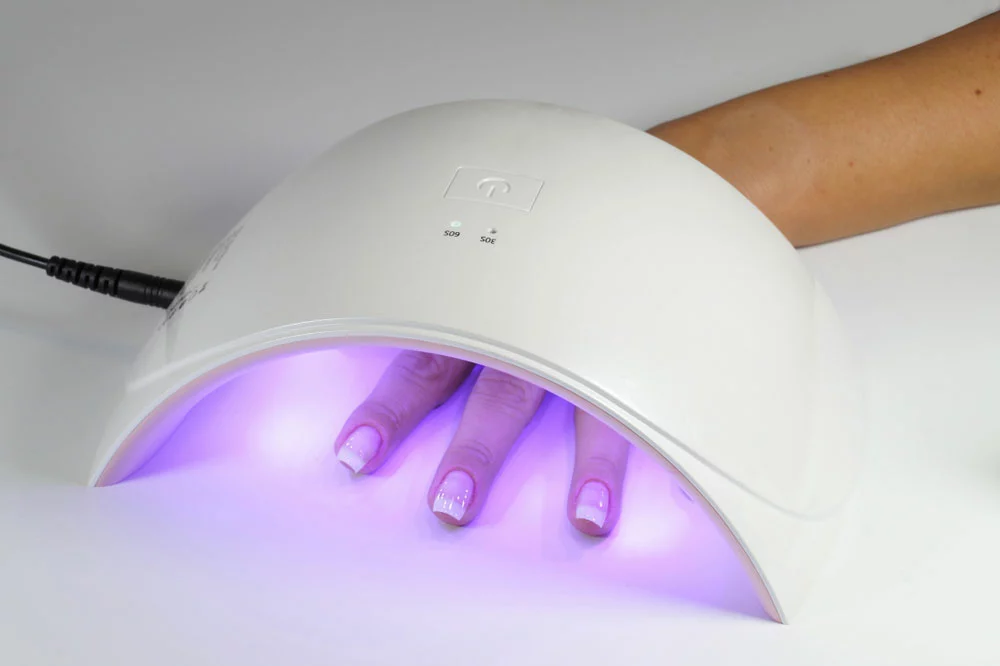
Manicure with UV LED lamp
Blacklight can be in various forms, such as the following:
- Fluorescent lamps
- Lasers light sources
- Light-emitting diodes (LEDs)
- Mercury-vapor light lamps
- Incandescent lights
However, incandescent lights give minute ultraviolet light making them poor artificial sources of black light. Still, you’ll find an incandescent black light bulb that gives dim violet-blue light.
Black light fluorescent tubes are way better than incandescent lights and give a brighter light. Notably, the fluorescent light from such bulbs results from energizing mercury atoms to release UV energy. An example of such a light is the fluorescent bulb ordinary in bug zappers.
Finally, lasers like fluorescent lighting give coherent and monochromatic black light radiation. It’s also invisible to the human eye, but exposure to light of such kind is potentially fatal. Hence the need to wear protective gear when using it.
How Black Light Functions
These lights obtain their glow from passing a current via a fluorescent tube with mercury and inert gas. After activation, mercury molecules will emit energy in the form of light photons in the UV range.
Nonetheless, the UV energy is invisible to the eye, unlike the typical white lights. Hence, a phosphor on the tube’s exterior converts the energy to visible light.
Black Light Vs. UV Light: What’s the Difference?
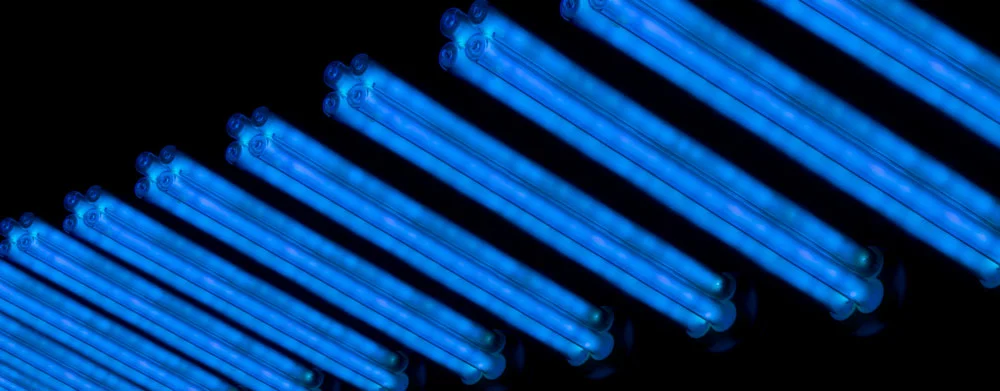
UV fluorescence tubes
Both types give a purple glow that is similar to a violet hue. Nonetheless, they are not in the visible light spectrum but neighbor it hence the similarity to the purple hue. Also, we decipher both in this form due to the red receptors in the human eyes.
Earlier, we highlighted UV light’s shorter wavelength than black light. Blacklight is purely UVA light, while UV light comprises UVA and UVB. However, the latter doesn’t have a trace of far-UVC light. Hence, UV is better suited to sterilization applications than UVA.
The main difference between the two is that UV is more potent than black radiation. Because UVB, a component of UV light, is more potent than UVA, which solely constitutes BL light.
Black Light vs. Black Light Blue
Black Light Blue bulbs (BLB) produce little purple visible light (blue color). On the other hand, black light (BL) bulbs have a more extended wave than BLB sources. Hence, BL bulbs have more visible light than BLB bulbs. Therefore, when people refer to BL bulbs, they talk of BLB lights.
Is Black Light or UV Light Safe?
Most BL bulbs are safe thanks to their long wavelength. They expose light with a wavelength that closely borders the visible region, which is safe. Extensive exposure to BL bulbs can cause skin damage and subsequent skin aging.
Also, beware of blacklight sources that give UVB and UVC light as they cause skin burns.
Considerations Before Buying UV Blacklights
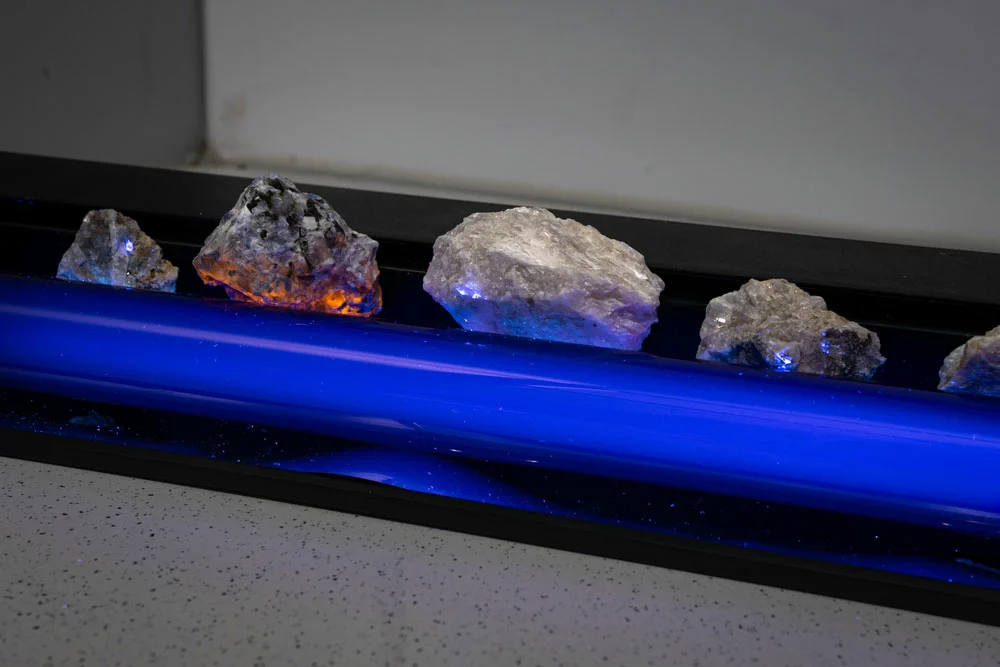
Illustrating fluorescence using UV radiation.
Here are the top consideration before purchasing UV blacklights:
1. First, you must identify whether you need backlights in LED lights or fluorescent bulbs.
For most people, LED lights are the most preferred form of UV backlights mainly because of their:
- High efficiency
- Long lifetime than fluorescent color bulbs
- They don’t have mercury and other hazardous substances.
2. Also, consider the UV brightness you require. But, since UV light is invisible, it is hard to quantify in lumens as other types of lights. Nonetheless, you can choose the correct watt of UV light you need for your applications.
3. Thirdly, you need to select the appropriate UV wavelength. Ideally, a wavelength between 320-380 nm will give you optimal fluorescence. For maximum fluorescence, a wavelength of 365 nm is the best.
4. Consider the UV light fixture that best suits your applications. Among the key features include:
- UV LED Strip Light
- UV LED Wall Washers
- Rigid UV LED Light Bar
- UV LED Flood Lights
Applications

A scorpion under UV illumination.
- The lights help inspect the genuineness of antiques as various antiques respond uniquely to UV light.
- Also, they help identify insects in the dark, such as scorpions that appear green under black light illumination.
- Thirdly, they aid in detecting forgery in bank notes. Paper money has a fluorescent color of luminous solids that shine in the presence of UV radiation.
- Similarly, the lights facilitate the detection of minerals such as Willemite, Quartz, Dolomite, and Opal that photoluminescence under UV light.
- Again, contemporary art paints glow under UV radiation. Hence, the lights are essential in art inspection.
- Besides, they are handy in identifying fluorescent microbes and treating psoriasis.
Summary
In a nutshell, UV lights are similar to black lights as they are both in the electromagnetic spectrum’s UV region. However, black lights are in the UVA band (longer wavelength than UVB and UVC), while UV lights comprise UVA and UVB. Also, the harmful effects of UV radiation are more pronounced in UV lights than in black lights. Lastly, black lights are helpful in many applications, as highlighted above. For more on UV lights and radiations, talk to us.
